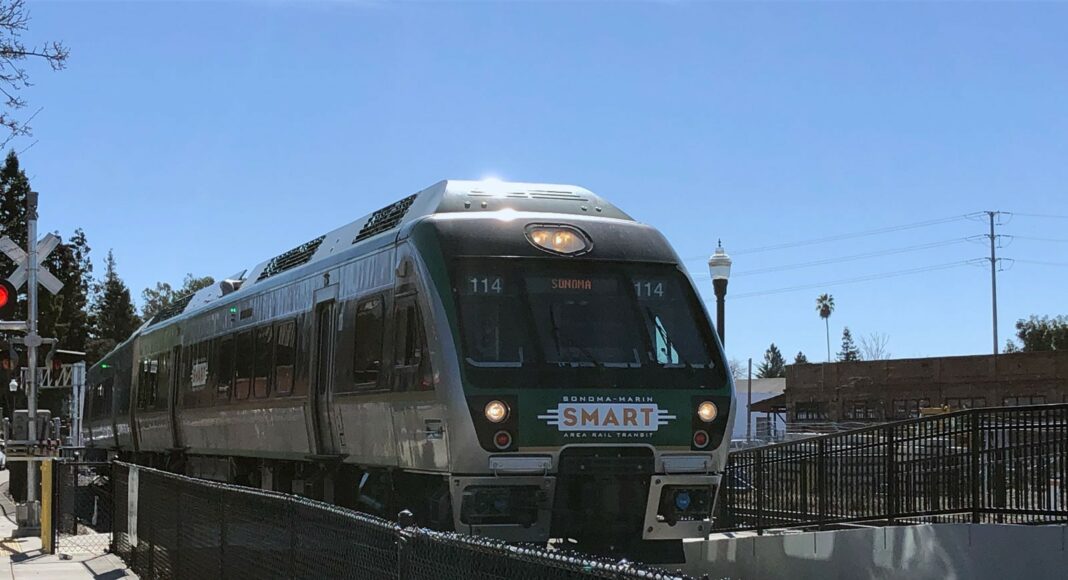In June, the Marin County Civil Grand Jury posed an existential question for the North Bay’s passenger rail agency.
“SMART at a Crossroads: Here Today, Gone Tomorrow?”, a report by the volunteer investigatory body, focuses on how the Sonoma-Marin Area Rail Transit agency plans to pass a sales tax extension by the end of the decade—and, to a lesser extent, what will happen if the measure fails.
“The Grand Jury has found that SMART is highly dependent on sales tax revenues for its operations. Without those funds SMART will not be able to continue even if it substantially increases the number of riders or obtains additional federal, state, or regional funding from existing programs,” the report states in part. According to the report, roughly 60% of the agency’s annual revenue comes from the sales tax, compared to 4% from fares.
The existential question was no doubt already on the minds of SMART’s board of directors, which formally responded to the report at its Aug. 16 meeting, agreeing with all of the report’s findings and recommendations.
As part of that, the board will publicly examine within the next year “how SMART might continue funding its operations beyond April 2029, including an evaluation of when the voters would decide whether to continue levying a sales tax for SMART’s operations.” The agency will also develop a written communications and outreach plan and budget to educate Marin and Sonoma county voters on the community benefits of the continued operations of the train, and consider hiring consultants to advise them on the feasibility and timing of another sales tax renewal ballot measure.
Voters first passed a tax measure in 2008, supporting the train with funding running through April 2029. Measure I, a March 2020 attempt to extend the tax, faced a well-funded opposition campaign and fell far short of the needed 66% support from voters in both counties.
Throughout its history, SMART has undershot its original ridership projections and construction goals. It has also been beset by some disasters outside of managements’ control—shortly after trains began running in 2017, the Tubbs Fire hit. Then, in 2020, the COVID pandemic cratered ridership on public transit agencies across the country.
While SMART officials like to point out that their ridership numbers are bouncing back from COVID faster than other Bay Area transit agencies, the figures are still well below the projections voters were given when they voted on the 2008 sales tax.
This July, SMART’s average weekday ridership was 2,550. While that’s high for SMART, it’s half of the 5,050 weekday riders by 2025 projected in a 2006 environmental impact report. At last week’s meeting, SMART‘s general manager, Eddy Cumins, said that he expects ridership will increase this month as students return to school.
Cumins took over the agency in early 2022. Since then, he has led a series of public outreach meetings aimed at identifying the agency’s strengths and weaknesses.
This June, SMART launched a shuttle service at the Sonoma County Airport to ferry passengers to the train station 1.5 miles away. So far, shuttle use is lower than expected, serving an average of nine passengers per weekday, Cumins said at last week’s meeting.












“4% of annual revenue from fares” Wow, that is a loser. It would be interesting to know the actual cost per passenger mile. That could be roughly calculated by a formula that considering the price of a ticket and then added the additional 96% as the actual cost. That’s an expensive ride. The carbon cost of these diesel trains would be interesting too. How much carbon per passenger mile? I’ll bet it’s a lot.